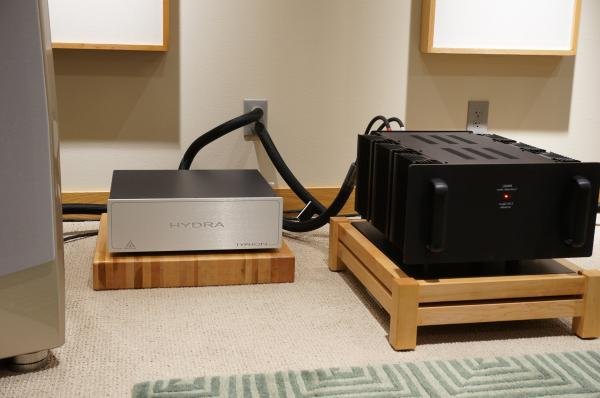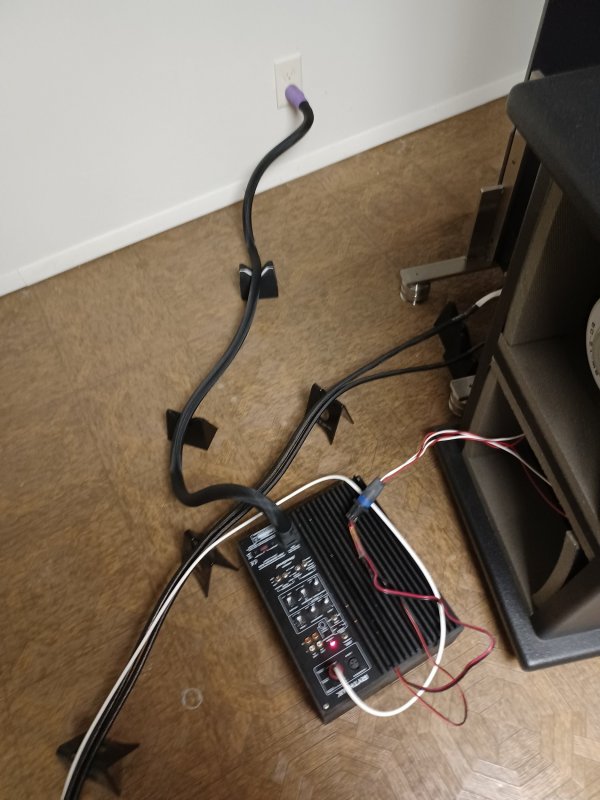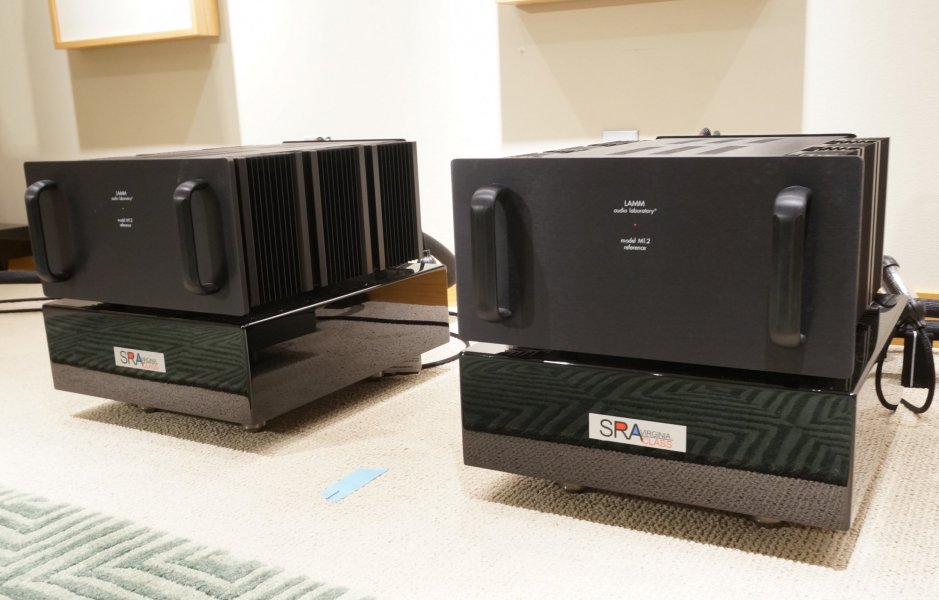Some of you have basic misunderstandings about AC power delivery and power rectification specifically. Without some basic knowledge you will never understand the subject.
It is necessary to understand the manner in which power supplies in consumer electronics function. The integrated circuits in consumer electronics require several DC voltages to operate. It is the job of the power supply to convert alternating current (AC) from the wall outlet to direct current (DC) voltages that supply power to the component's electronic circuits.There are basically two types of power supplies: transformer and transformer-less (switched mode) power supplies. Both use rectifiers that are essentially electronic switches that alternately turn on and off in response to the input AC voltage. It is the rectifiers that convert the AC voltage to a pulsating DC voltage.. This voltage is stored and filtered by the power supply storage capacitors that provide the relatively stable DC voltages to the PCBs and integrated circuits.Unlike a light bulb, fan or simple motor, audio/video power supplies do not pull current in a constant or linear fashion. Rather, they pull current in instantaneous pulses as the rectifiers switch on to fill the storage capacitors. This is as true for low current devices such as CD players and pre-amplifiers as it is for high current amplifiers. The rectifiers turn on and off at the positive and negative voltage peaks of the AC waveform. These current pulses have high frequency harmonics up to 50 times the frequency of the AC power line. This places a great demand upon the AC power circuit and associated connections to deliver current without significant impedance to the flow.
Placing anything in front of an electronics system that restricts, impedes or slows instantaneous impulse AC power will often noticeably degrade the performance of the system. This is why most electronics manufacturers discourage the use of power conditioners. They understand that traditional low-pass power “conditioners" interfere with instantaneous current flow and interfere with the performance of their carefully engineered power-supplies.
How do you measure current pulses?
Conventional AC power testing methods and equipment are not designed to detect the volume of current delivered during the brief conduction period (milliseconds) and the corresponding impedance during the period of conduction. Multimeters measure voltage and current averaged over a period of one or more AC cycles. Common current probes are too slow to give an accurate reading of current delivery during a single current pulse that has a period of only a few milliseconds.
What is DTCD - dynamic transient current delivery?
DTCD is method of current analysis that measures instantaneous current delivery in the context of a pulsed current draw. In layman’s terms, it is a way of measuring current performance into typical electronic component power supplies. It allows the measurement of pulsed transient current through a variety of AC power products, including: power wiring, outlets, distribution panels, terminals, connectors, power cords and portable power distribution boxes.
Shunyata Research developed a DTCD ANALYZER specifically designed to perform DTCD measurements. The analyzer simulates the pulsed current draw of typical electronic power supplies. It supplies a precision reference voltage to the DUT (device under test) and measures its ability to conduct current during a short gate time (milliseconds). The DTCD ANALYZER provides a read-out of the equivalent current (DTCD-I) that the DUT could deliver in a one second time period. It also calculates the equivalent voltage drop (DTCD-Vd) and corresponding impedance (DTCD-?).
And to save you some time here are some of the most common misconceptions about DTCD graphs.
Why is the amperage in the graphs so high?
You may be thinking that your CD player only pulls about one amp of current and your amplifier only draws about 12 amps. So how can a test be valid that shows the cord pulling hundreds of amps of current?
Power supplies only pull current for about 5% to 10% (or less) of the AC duty cycle. During the conduction period, when the cable is actually conducting current, the instantaneous current could be hundreds of amps, but the longer term average is only one to 20 amps, depending upon the device and the load.
Note: If a power supply is drawing 10 amps of current (as measured by a standard current meter), then the peak currents would be 10 to 20 times higher or 100-200 amps of instantaneous current.
—
It appears from the graph that the standard power cord has voltage drop of more than 50%. How is this possible?
The answer is similar to the answer above. Since the conduction period is short and fast, the cable is presented with an instantaneous change in current. The impedance and inductance of the cable resists the change in current and causes a short term voltage drop across the cable. Of course, there is not a sustained or significant average voltage drop. Otherwise, the equipment wouldn't function.
The DTCD Analyzer uses a source voltage of 30 volts to represent a typical difference voltage between the power supplies storage capacitors and the peak voltage of the line. So, the graph is indicating the amount of voltage drop between the voltage on the capacitors and the line voltage - not the difference between the peak line voltage and ground.
Note the peak of the standard power line(120 volts AC) is about 163 volts (Peak) depending and what the crest factor (1.35 typical) of the power line. What the test shows is that the standard power cable under these test conditions would have a 15 volt drop in the power cable while sourcing 130 amps. While the Venom-3 power cable would only have a 5 volt drop and have the ability to provide almost twice the current 230 amps. – at a third of the cable voltage drop.
Note again that the conduction period is 1/10 to 1/20 of the power line cycle, so peak currents are 10 to 20 times higher than measured RMS currents or rated currents. A power amp at full power can be drawing 10 amps, resulting in peak current draw during the charging period of 100 to 200 amps. If the power amp needs 130 amps of current during the peak charging period, the standard power cable would have a cable voltage drop of 15 volts. This would limit the ability of the input stage of the power amp to fully charge, which effectively would create a relative low line condition as the input stage of the power amp will not be able to fully charge. To put it another way, the input line voltage has been reduced from 120VAC to about 110VAC!
—
Microseconds seems like an unreasonably short period of time to measure current. Why is that?
Since power supplies pull current in pulses and the pulse duration is typically less than 10% of the duty cycle, the conduction period is typically 200-800 microseconds. The time scale for the graphs is about 50 microseconds from beginning to end. Notice that the slope of the measured waveforms levels out and stabilizes within that 50 microsecond timeframe. Therefore, it is unnecessary to display information beyond the 50 microseconds. In other words, the measured differences would be the same even if we extended the time period beyond that shown.
—
If the standard power cord slows current delivery, doesn't it just take a bit longer to fill the storage capacitors?
This is true and explains why the power supply will function within normal average voltage and current requirements. However, that does not mean that there are not audible differences between a cord with better DTCD. A cord with higher instantaneous current delivery will fill the storage capacitors faster. Therefore, the rectifiers are on for a shorter period of time. The longer it takes to fill the storage capacitors means that the peak of the charging waveform has passed while still trying to charge the storage capacitors, thus not able to fully charge the storage capacitors. Also, note the volt drop in the power cable limits the ultimate voltage level that the filter capacitors can be charged to.
A power cable able to supply 300 to 400 amps of charging current will have a much shorter charging time than a cable only able to supply 100 amps. The 100 amp power cable will have voltage drops and resistance that limits its ability to fully charge the input capacitors. As the charging will not be finished before the peak of the power line charging cycle has passed.
This reduces the amount of time that the power supply is in a low impedance, open condition to the power line. When the rectifiers are on, power line noise is more likely to be transmitted through to the power supply.
It is necessary to understand the manner in which power supplies in consumer electronics function. The integrated circuits in consumer electronics require several DC voltages to operate. It is the job of the power supply to convert alternating current (AC) from the wall outlet to direct current (DC) voltages that supply power to the component's electronic circuits.There are basically two types of power supplies: transformer and transformer-less (switched mode) power supplies. Both use rectifiers that are essentially electronic switches that alternately turn on and off in response to the input AC voltage. It is the rectifiers that convert the AC voltage to a pulsating DC voltage.. This voltage is stored and filtered by the power supply storage capacitors that provide the relatively stable DC voltages to the PCBs and integrated circuits.Unlike a light bulb, fan or simple motor, audio/video power supplies do not pull current in a constant or linear fashion. Rather, they pull current in instantaneous pulses as the rectifiers switch on to fill the storage capacitors. This is as true for low current devices such as CD players and pre-amplifiers as it is for high current amplifiers. The rectifiers turn on and off at the positive and negative voltage peaks of the AC waveform. These current pulses have high frequency harmonics up to 50 times the frequency of the AC power line. This places a great demand upon the AC power circuit and associated connections to deliver current without significant impedance to the flow.
Placing anything in front of an electronics system that restricts, impedes or slows instantaneous impulse AC power will often noticeably degrade the performance of the system. This is why most electronics manufacturers discourage the use of power conditioners. They understand that traditional low-pass power “conditioners" interfere with instantaneous current flow and interfere with the performance of their carefully engineered power-supplies.
How do you measure current pulses?
Conventional AC power testing methods and equipment are not designed to detect the volume of current delivered during the brief conduction period (milliseconds) and the corresponding impedance during the period of conduction. Multimeters measure voltage and current averaged over a period of one or more AC cycles. Common current probes are too slow to give an accurate reading of current delivery during a single current pulse that has a period of only a few milliseconds.
What is DTCD - dynamic transient current delivery?
DTCD is method of current analysis that measures instantaneous current delivery in the context of a pulsed current draw. In layman’s terms, it is a way of measuring current performance into typical electronic component power supplies. It allows the measurement of pulsed transient current through a variety of AC power products, including: power wiring, outlets, distribution panels, terminals, connectors, power cords and portable power distribution boxes.
Shunyata Research developed a DTCD ANALYZER specifically designed to perform DTCD measurements. The analyzer simulates the pulsed current draw of typical electronic power supplies. It supplies a precision reference voltage to the DUT (device under test) and measures its ability to conduct current during a short gate time (milliseconds). The DTCD ANALYZER provides a read-out of the equivalent current (DTCD-I) that the DUT could deliver in a one second time period. It also calculates the equivalent voltage drop (DTCD-Vd) and corresponding impedance (DTCD-?).
And to save you some time here are some of the most common misconceptions about DTCD graphs.
Why is the amperage in the graphs so high?
You may be thinking that your CD player only pulls about one amp of current and your amplifier only draws about 12 amps. So how can a test be valid that shows the cord pulling hundreds of amps of current?
Power supplies only pull current for about 5% to 10% (or less) of the AC duty cycle. During the conduction period, when the cable is actually conducting current, the instantaneous current could be hundreds of amps, but the longer term average is only one to 20 amps, depending upon the device and the load.
Note: If a power supply is drawing 10 amps of current (as measured by a standard current meter), then the peak currents would be 10 to 20 times higher or 100-200 amps of instantaneous current.
—
It appears from the graph that the standard power cord has voltage drop of more than 50%. How is this possible?
The answer is similar to the answer above. Since the conduction period is short and fast, the cable is presented with an instantaneous change in current. The impedance and inductance of the cable resists the change in current and causes a short term voltage drop across the cable. Of course, there is not a sustained or significant average voltage drop. Otherwise, the equipment wouldn't function.
The DTCD Analyzer uses a source voltage of 30 volts to represent a typical difference voltage between the power supplies storage capacitors and the peak voltage of the line. So, the graph is indicating the amount of voltage drop between the voltage on the capacitors and the line voltage - not the difference between the peak line voltage and ground.
Note the peak of the standard power line(120 volts AC) is about 163 volts (Peak) depending and what the crest factor (1.35 typical) of the power line. What the test shows is that the standard power cable under these test conditions would have a 15 volt drop in the power cable while sourcing 130 amps. While the Venom-3 power cable would only have a 5 volt drop and have the ability to provide almost twice the current 230 amps. – at a third of the cable voltage drop.
Note again that the conduction period is 1/10 to 1/20 of the power line cycle, so peak currents are 10 to 20 times higher than measured RMS currents or rated currents. A power amp at full power can be drawing 10 amps, resulting in peak current draw during the charging period of 100 to 200 amps. If the power amp needs 130 amps of current during the peak charging period, the standard power cable would have a cable voltage drop of 15 volts. This would limit the ability of the input stage of the power amp to fully charge, which effectively would create a relative low line condition as the input stage of the power amp will not be able to fully charge. To put it another way, the input line voltage has been reduced from 120VAC to about 110VAC!
—
Microseconds seems like an unreasonably short period of time to measure current. Why is that?
Since power supplies pull current in pulses and the pulse duration is typically less than 10% of the duty cycle, the conduction period is typically 200-800 microseconds. The time scale for the graphs is about 50 microseconds from beginning to end. Notice that the slope of the measured waveforms levels out and stabilizes within that 50 microsecond timeframe. Therefore, it is unnecessary to display information beyond the 50 microseconds. In other words, the measured differences would be the same even if we extended the time period beyond that shown.
—
If the standard power cord slows current delivery, doesn't it just take a bit longer to fill the storage capacitors?
This is true and explains why the power supply will function within normal average voltage and current requirements. However, that does not mean that there are not audible differences between a cord with better DTCD. A cord with higher instantaneous current delivery will fill the storage capacitors faster. Therefore, the rectifiers are on for a shorter period of time. The longer it takes to fill the storage capacitors means that the peak of the charging waveform has passed while still trying to charge the storage capacitors, thus not able to fully charge the storage capacitors. Also, note the volt drop in the power cable limits the ultimate voltage level that the filter capacitors can be charged to.
A power cable able to supply 300 to 400 amps of charging current will have a much shorter charging time than a cable only able to supply 100 amps. The 100 amp power cable will have voltage drops and resistance that limits its ability to fully charge the input capacitors. As the charging will not be finished before the peak of the power line charging cycle has passed.
This reduces the amount of time that the power supply is in a low impedance, open condition to the power line. When the rectifiers are on, power line noise is more likely to be transmitted through to the power supply.





